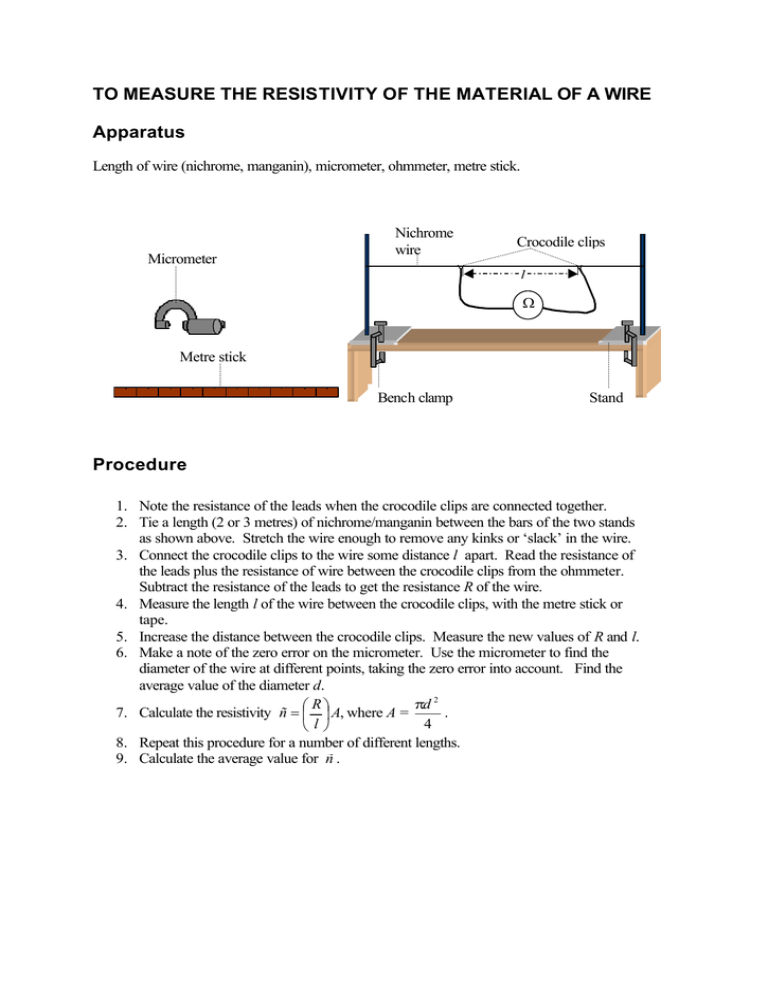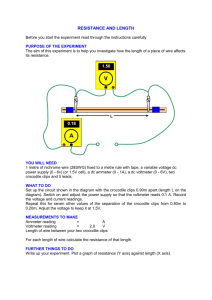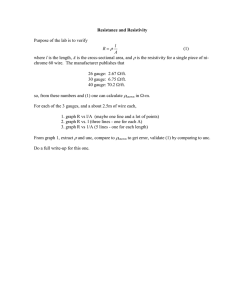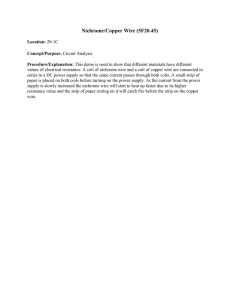Measurement of the resistivity of the material of a wire
advertisement

TO MEASURE THE RESISTIVITY OF THE MATERIAL OF A WIRE Apparatus Length of wire (nichrome, manganin), micrometer, ohmmeter, metre stick. Micrometer Nichrome wire Crocodile clips l Ω Metre stick Bench clamp Stand Procedure 1. Note the resistance of the leads when the crocodile clips are connected together. 2. Tie a length (2 or 3 metres) of nichrome/manganin between the bars of the two stands as shown above. Stretch the wire enough to remove any kinks or ‘slack’ in the wire. 3. Connect the crocodile clips to the wire some distance l apart. Read the resistance of the leads plus the resistance of wire between the crocodile clips from the ohmmeter. Subtract the resistance of the leads to get the resistance R of the wire. 4. Measure the length l of the wire between the crocodile clips, with the metre stick or tape. 5. Increase the distance between the crocodile clips. Measure the new values of R and l. 6. Make a note of the zero error on the micrometer. Use the micrometer to find the diameter of the wire at different points, taking the zero error into account. Find the average value of the diameter d. R πd 2 7. Calculate the resistivity ñ = A, where A = . 4 l 8. Repeat this procedure for a number of different lengths. 9. Calculate the average value for ñ . Results Micrometer Reading/mm Resistance of leads Micrometer zero error Average of micrometer readings Diameter of wire R/Ω = = = = l/m R /Ω m-1 l ñ /Ω m Average value of ñ = Notes Safety glasses should be worn as the wire could snap when stretched. Use a micrometer with a slip-screw. If clamps are unavailable, two students may hold the stands to keep the wire stretched enough to avoid kinks. Alternatively stretch the wire between two nails, which are positioned one to two metres apart on a piece of wood. The resistivity of nichrome is 100 × 10–8 Ω m (at 20 °C). The resistivity of manganin is 48 × 10–8 Ω m (at 20 °C). The resistivity values given depends on composition of the alloys used.




